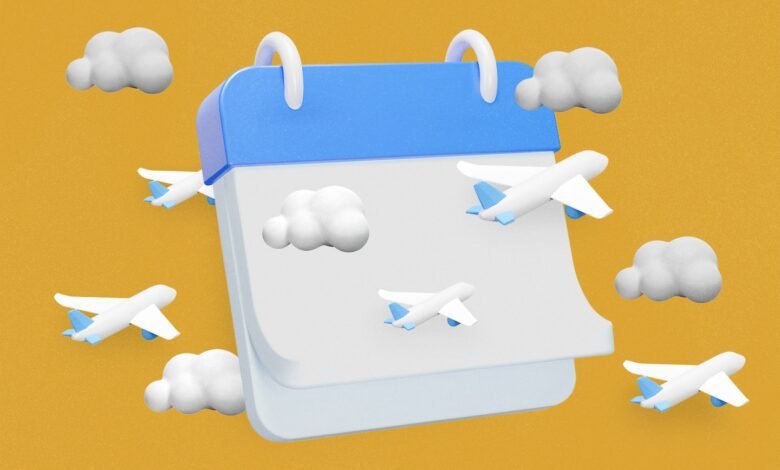Summer storms and airport crowds make July the worst time to fly

July was the hardest-hit month for extreme weather last year, with 7,996 delays, according to federal data. It was the worst month for such delays since at least 2016. July has been the worst month of the year by that metric in six of the past eight years.
Between June and August last year, there were nearly 20,000 delays due to extreme weather conditions. That’s more than the number of such delays in the six least affected months combined.
Why delays are worse in the summer
The Department of Transportation defines extreme weather delays as those caused by actual or anticipated “significant weather conditions,” such as a tornado, blizzard or hurricane, that would delay or prevent the operation of a flight.
Delays caused by non-extreme weather conditions are grouped into another category that also includes airport operations, heavy traffic volume and air traffic control. Statistics from the Department of Transportation show that weather conditions account for the largest share of these delays — typically more than 60 percent — in the months between May and August.
Summer thunderstorms include “lightning strikes that can disrupt airport operations, in some cases completely shutting down arrivals and departures at major airports,” Robert W. Mann, a consultant and former airline executive, said in an email. The severe weather can disrupt traffic along busy flight corridors. He said these summer conditions are more likely and widespread than winter disruptions, making summer delays more prevalent.
Kathleen Bangs, a spokeswoman for flight tracking service FlightAware and a former airline pilot, said developing thunderstorms can force an airport to quickly adjust operations, including the direction in which planes take off and land.
“That doesn’t tend to happen in the winter,” she said. “You don’t have as many rapid changes in such a short period of time.”
Few protections against weather delays
For summer travelers, the collision of storm delays and overbooked flights could lead to extra frustration. Mann noted that there would likely be fewer empty seats to accommodate passengers whose flights were canceled or who missed connections.
“With so many people traveling in the summer, your options can be quite limited,” said Katy Nastro, a spokeswoman for cheap flight alert service Going.
Also limited: Airlines’ liabilities when delays are caused by weather. Major carriers have pledged to take certain actions for customers, such as offering meal vouchers and hotel stays in the event of cancellations and long delays caused by “controllable” circumstances.
“Unfortunately, this uncontrollable scenario gives you the least amount of rights,” Nastro said.
Still, regardless of the reason, if a flight is canceled or significantly delayed and a passenger ends up not traveling, they are entitled to a refund. Once a new DOT rule goes into effect later this year, those refunds should be issued automatically.
How to avoid flight delays
Air travel experts say passengers should keep a few tips in mind to ensure a smoother journey during the stormy months.
Nastro said that if people are still planning their trips — or have the option of changing an existing trip — they should take the first flight of the day that they can find. The chance of bad weather is lower, and planes are usually waiting at the airport, so the risk of delay is limited. And if something were to go wrong, travelers would still have time to try to catch later flights.
Another benefit of morning flights? “You’ll almost always have a smoother ride,” Bangs said.
Travelers should also take direct flights whenever possible to avoid the possibility of disruptions during layovers and possible missed connecting flights.
Bangs recommends checking the National Weather Service’s national forecast chart and a Federal Aviation Administration page that shows the status of the nation’s airspace. If there are major storms or delays where you’re headed, this can give you a chance to proactively make alternative arrangements.
“It gives you that information so you can start to see the future,” she said. “I see the country as kind of a big chessboard and you can get a few moves ahead knowing what’s going on.”
If you know before you head to the airport that your flight will be delayed, experts suggest playing it safe and still showing up on time, as long as the announced delay is two hours or less. If you want to stay home, use a flight tracking site like FlightAware or Flightradar24 to track your plane’s location, and make sure you’ve signed up for notifications from the airline.
“Be very careful about what you choose to do,” travel analyst Henry Harteveldt, president of Atmosphere Research Group, told The Washington Post last year. “Ultimately, the airline is not responsible for making sure you get on the plane. That’s up to you. When it’s time to leave, the plane will leave.”
Andrea Sachs contributed to this report




